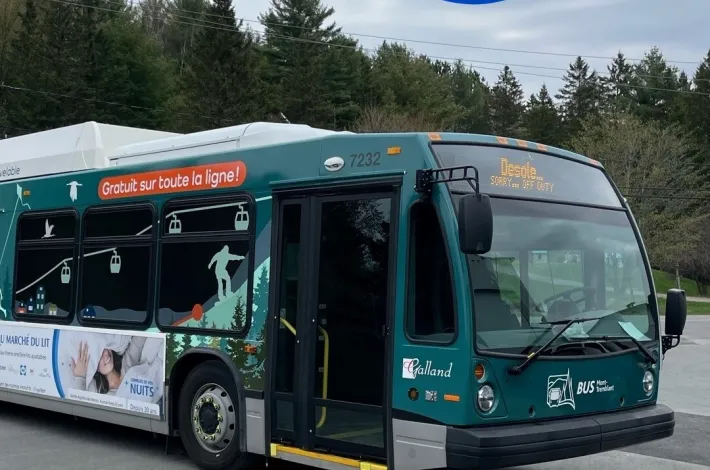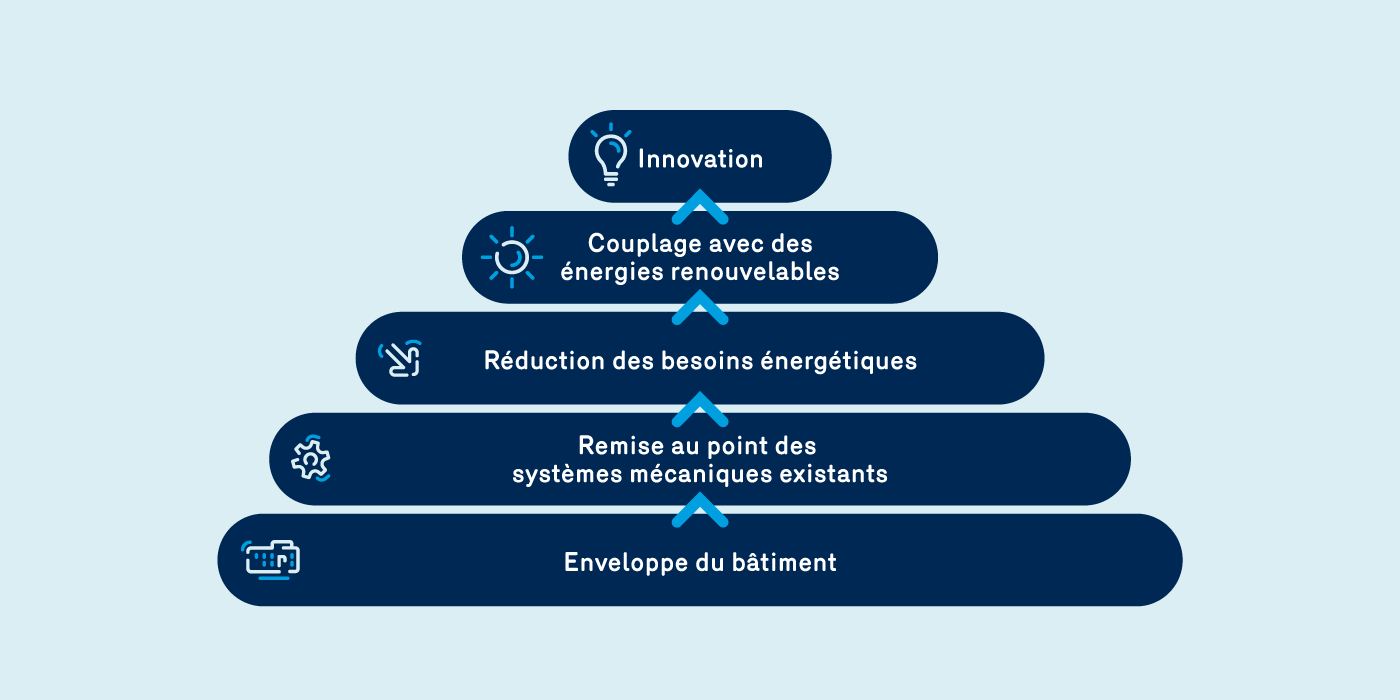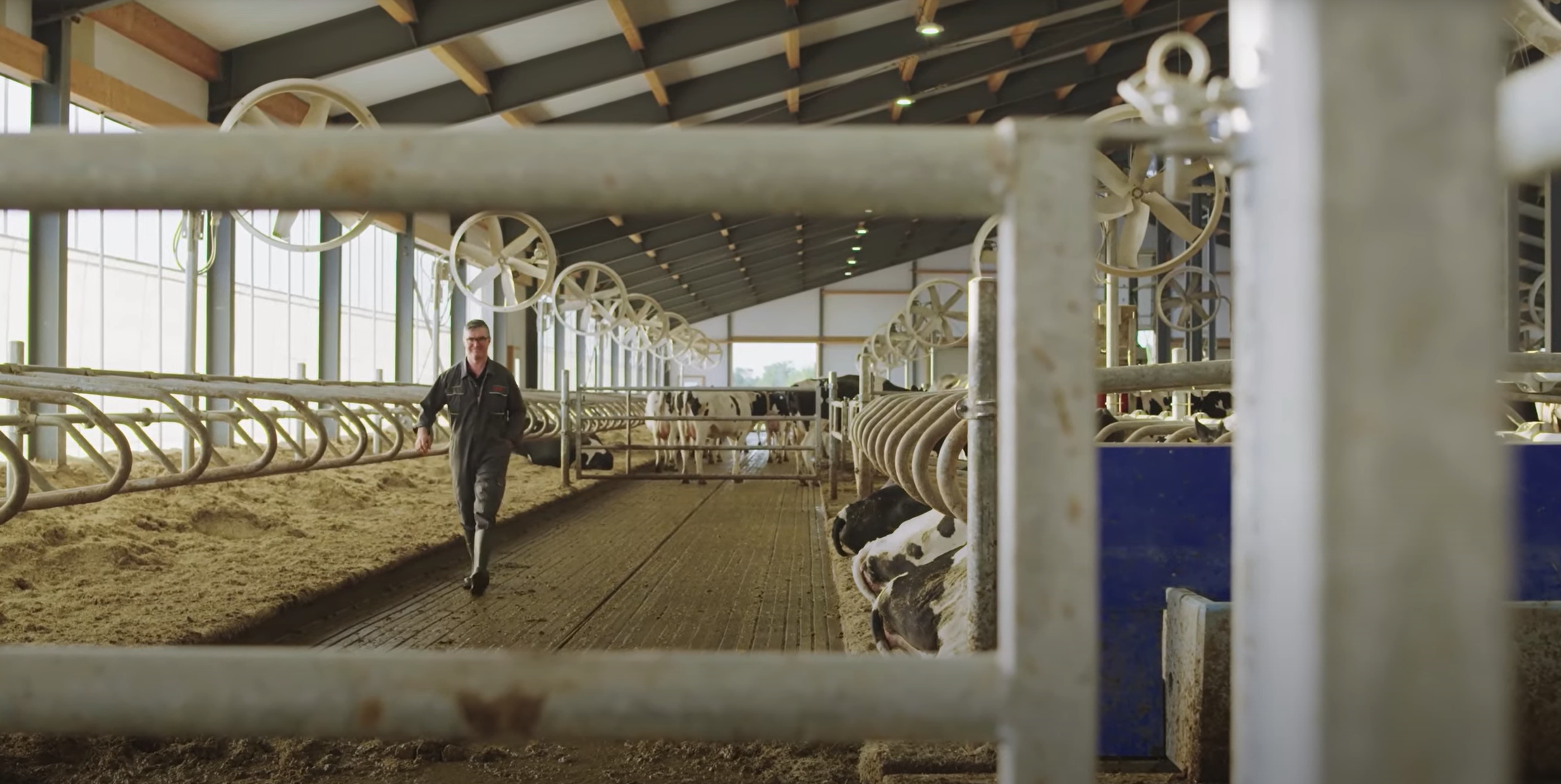
GHG reduction: The trucking industry shifts into high gear

In Québec and around the world, efforts are being stepped up to reduce greenhouse gases (GHGs) in order to fight global warming. The road freight transport sector, which accounts for more than one-third of GHG emissions in Québec, is no exception. The sector is actively working to decarbonize its activities to contribute to the energy transition. How is it tackling this challenge? What are the most promising technologies? Is there an ideal solution? Keep reading to find out all you need to know.
Driving change
According to a study published in 2019 by the North American Council for Freight Efficiency (NACFE), a non-profit organization dedicated to improving the freight efficiency of North American goods movement, the trucking industry has entered a period of major change in the choice of powertrain technologies, thanks to the advent of new technologies and loweremission fuels.
In addition, according to NACFE, managers of freight trucking fleets are starting to consider acquiring alternative fuel vehicles due to the cost savings and environmental benefits they offer.
According to a study by HEC Montréal’s Chair in Energy Sector Management, a wide range of technologies should be considered for freight transportation vehicles. Since no one technology clearly stands out from the others, we should opt for a combination of technological and energy approaches for greater flexibility. We’ve presented a round-up of these below.
Fuelling progress
Some of these “cleaner” technologies and fuels have already been adopted by North American carriers, while others are still being tested to analyze their potential for freight transportation:
- Electric vehicles offer a range of up to 350 km and are generally reserved for local transportation. However, some manufacturers are advertising vehicles with ranges of 800 to 1,000 km. The main drawback? Electric trucks still come with a high price tag and a relatively long recharging time. Furthermore, according to the same study by HEC Montréal’s Chair in Energy Sector Management, we shouldn’t aim for the complete electrification of medium and heavy vehicles given the significant additional electrical capacity it would require and the large amounts of electric energy already needed by other sectors.
- Hydrogen fuel cell electric vehicles are currently being tested in several North American cities, primarily for public transit.
- Hybrid diesel engines (combined with an electric motor) are already used by several public transit services around the world, and some manufacturers have begun to develop this technology for freight transportation.
- Natural gas (compressed or liquefied) is booming in California and Europe. These markets are investing heavily in the development of the renewable natural gas industry (RNG), which already accounts for 17% of Europe’s consumption of natural gas for vehicles (NGV). In Québec, RNG production is also on the rise and is being promoted by the government, which has set the minimum amount of RNG that Énergir will have to inject into its system by 2025 at 5%. Bioenergy, including renewable natural gas, is playing a larger role in the energy mix!
- The hybrid natural gas engine is another promising technology that combines an electric motor with a motor powered by compressed or liquefied natural gas. Hyliion, a U.S. company, already offers hybrid natural gas systems that can be integrated into some heavy-duty vehicles. The company has also just introduced the Hypertruck ERX, a new hybrid truck powered by a renewable natural gas engine that offers a range of nearly 2,000 km, can be refuelled in about 10 minutes and weighs less than diesel or all-electric vehicles.
The best solution?
Among this abundance of promising technologies, the rechargeable electric-natural gas hybrid engine (like the one used in the Hyliion ERX Hypertruck) stands out due to its multiple advantages: reduced GHG emissions, long-range, reduced refuelling time, energy efficiency (thanks to regenerative braking) and on-demand power. A wide range of technologies in freight transportation vehicles is bringing some welcome and necessary diversity to the market.
Looking down the road
Will natural gas hybrid vehicles be able to meet the challenges of Québec’s geography, with its long distances and steep roads? Time will tell. One thing is certain, however. We can no longer consider a single solution for the energy transition. Rather, we need to give ourselves the opportunity to consider a host of complementary solutions that would make Québec’s energy system more resilient and flexible. In any case, our province is well-positioned to bring these new technologies to the forefront, as it can count on a strong NGV supply network, a booming RNG sector and abundant hydroelectric resources, which are all undeniable advantages for the road transportation sector.
| What is a hybrid electric vehicle? A hybrid electric vehicle is a vehicle powered by both an electric motor and a combustion engine. Hybrid electric vehicles generally have relatively modest electrical storage capacity (batteries), since the electrical energy supply is mainly provided by regenerative braking. This process recharges the vehicle’s batteries by recovering the kinetic energy normally dissipated as heat during braking. As this type of vehicle does not allow for an external power supply, the available electrical energy is limited and is primarily used in the first few seconds of the vehicle’s acceleration. |
You may also like...



Energy, Sustainable development
Énergir and Quebec City, united for waste recoveryPopular articles

The Maslow energy efficiency pyramid: A winning approach to successful energy efficiency projects
See the article
Coop Agri-Énergie Warwick, a model of environmentally responsible agriculture
See the article
Saving energy while keeping customers comfortable: the winning recipe at Marchés IGA Lambert
See the article